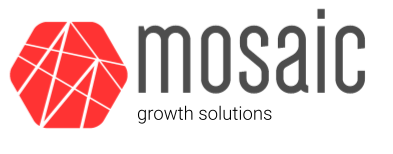We recently worked with a B2B SaaS client that had a single employee in marketing. The woman, who assumes the marketing leadership role, has worked at the company for years. She’s built up significant knowledge about the business and the industry. She is also smart, tenacious, organized, and very hard-working and has the unwavering support of the CEO. Sounds good so far, right? The problem is that she is not very effective at her job and has not been for a while. The reason is that her role has changed dramatically over the years; the marketing function went from being perceived as a nice-to-have to a core driver of growth for the company but she has never received the training or guidance she needed to successfully meet this new expectation.
The skills required to be a good marketing leader at a company in “maintenance-mode” are vastly different from the skills required to be a strong marketing leader in an organization that is in “growth-mode.” As the sole marketing employee, she not only needed to ramp up her tactical knowledge on paid advertising and organic search, but she also needed to feel more confident in strategic planning, reporting, and analytics. She needed guidance on how to work more effectively with the sales team. And, while learning all of this, she needed to keep the day-to-day going. The result? By the time we engaged with the client, the marketing leader was extremely frustrated and overwhelmed while the management team felt that she was under-performing. Luckily, we were able to help her and the organization align on expectations and bridge the skills gap. Here’s how we did it:
- Figure out what is actually important: Many rapidly growing organizations don’t have sufficient focus. Trying to address all the growth opportunities at once often ends up as being mediocre at everything. Plus, you end up with overworked and overwhelmed employees. Leaders need to create a growth vision (specific goals and objectives and how you will achieve them) and ensure the organization is aligned around them from top to bottom.
- Understand the expectations: Once you know what success looks like for the company, you need to figure out how your team is expected to contribute to that success. What are the key performance indicators for your team? How do these KPIs feed into organizational goals and objectives?
- Assess existing skills sets: Once you narrow focus and understand expectations, you are ready to assess talent. It is likely you, as with most rapidly growing organizations, will have skill gaps with your current team. However, remember these can be addressed in several ways. In addition to upskilling, you could also shift responsibilities around the team, leveraging external agencies and consultants, or hiring new talent. Figure out the best way (It will probably take a combination of things) to address the gaps you have and where it makes sense to upskill.
- Get to know the team: Stay open and honest with your employees who need upskilling. Ask them what is important to them and if the new skill is something they are actually interested in learning. Upskilling only works if the employee is bought in and ready. If they are committed, then provide them with the support, guidance, and resources they will need to secure the new skills and knowledge.
- Be realistic: Upskilling takes time – you won’t see results overnight. In fact, you may see a decrease in output and productivity as an employee is involved in learning. Ensure you take this into consideration as you set expectations, both with your team and with your leadership – maybe some short-term pain for long-term gain.
TL;DR
There’s a lot of buzz around “upskilling” these days both in terms of keeping up with the digital landscape and employee retention. And, for the most part, investing in continued learning and professional development is a good thing. However, taking the time upfront to do some diligence before investing in upskilling for your team will help you maximize the value and likely result in happier employees.


Recent Comments